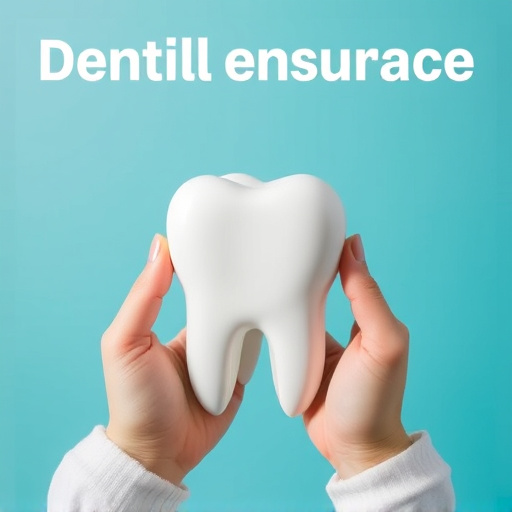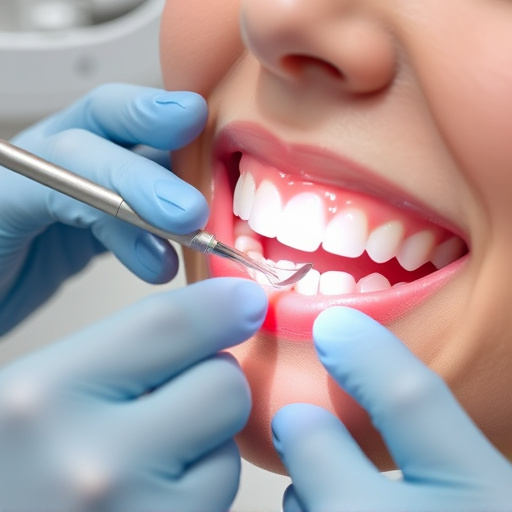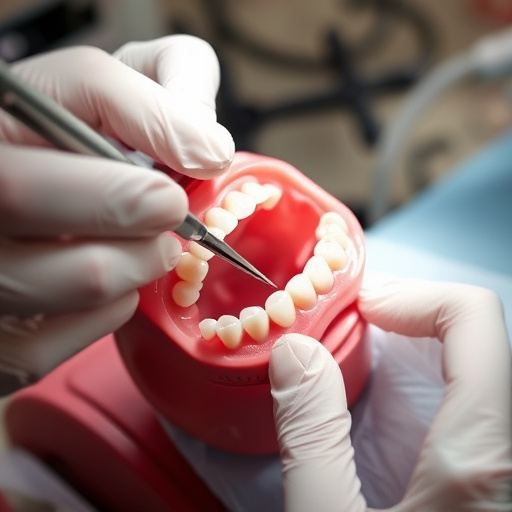Occlusal adjustment is a dental procedure that corrects how your teeth fit together (occlusion), addressing sensitivity caused by exposed dentin due to receding gums or misaligned bites. Dentists may recommend bonding, fillings, or crowns to modify bite alignment and protect sensitive areas, providing relief from tooth sensitivity and enhancing overall dental health. This non-invasive method, often recommended during routine exams, offers long-term benefits such as preventing teeth grinding (bruxism) and TMJ symptoms, minimizing future dental treatments, and promoting oral comfort.
Occlusal adjustment, a precise dental procedure, plays a pivotal role in managing tooth sensitivity. This article delves into the science behind occlusal adjustment, revealing how it corrects misalignments between upper and lower teeth, alleviating sensitivity effectively. We explore common causes of tooth sensitivity and demonstrate how this adjustment acts as a game-changer, offering long-term benefits for dental health. Understanding occlusal adjustment is key to achieving lasting relief from sensitive teeth.
- Understanding Occlusal Adjustment and Its Role in Tooth Sensitivity
- Common Causes of Tooth Sensitivity and How Occlusal Adjustment Helps
- The Process of Occlusal Adjustment and Long-term Benefits for Dental Health
Understanding Occlusal Adjustment and Its Role in Tooth Sensitivity

Occlusal adjustment refers to the process of modifying the way your teeth fit together, known as occlusion. It plays a pivotal role in addressing tooth sensitivity, which is often caused by exposed dentin due to receding gums or poor bite alignment. By adjusting your occlusion, dentists can significantly reduce the risk of sensitivity and associated discomfort. This adjustment involves careful assessment and subtle changes to ensure teeth meet correctly, promoting overall dental health and comfort.
A skilled dentist may recommend various procedures to achieve this, such as dental bonding, cosmetic fillings, or in some cases, dental crowns. These treatments not only improve bite alignment but also serve as protective barriers against further sensitivity. By addressing the underlying occlusal issues, individuals can experience lasting relief from sensitive teeth and maintain a healthier, more comfortable smile.
Common Causes of Tooth Sensitivity and How Occlusal Adjustment Helps

Tooth sensitivity is a common dental concern, often caused by exposed dentin due to receding gums or tooth enamel wear. Various factors contribute to this issue, including brushing too hard, teeth grinding (bruxism), acidic foods and beverages, and certain oral hygiene products. When the dentin becomes exposed, it allows heat, cold, sweet, or sour substances to enter the tooth’s inner layer, triggering sensitivity and discomfort.
Occlusal adjustment is a non-invasive procedure that can effectively alleviate tooth sensitivity. It involves the careful analysis of your bite and making precise adjustments to align your teeth. By correcting misalignments and eliminating excessive force on specific teeth, occlusal adjustment reduces stress on the gums and enamel, preventing further damage. This treatment, often recommended by dentists during routine oral exams, can be a game-changer for individuals seeking relief from sensitive teeth. Restorative dentistry techniques, including cosmetic fillings, might also be employed alongside occlusal adjustment to strengthen and protect vulnerable areas, providing long-lasting solutions for tooth sensitivity.
The Process of Occlusal Adjustment and Long-term Benefits for Dental Health

The process of occlusal adjustment involves carefully modifying the biting surfaces of teeth to achieve proper alignment and balance. Dentists use various techniques, such as grinding or reshaping the tooth enamel, to correct misalignments that can lead to tooth sensitivity, headaches, and other dental issues. This adjustment ensures that upper and lower teeth fit together harmoniously, reducing excessive wear and tear on individual teeth.
Over time, occlusal adjustment offers significant long-term benefits for dental health. By preventing tooth grinding (bruxism) and improving jaw alignment, it can mitigate the need for future dental procedures like dental fillings, clear aligners, or even dental crowns to address damage caused by improper bite forces. Additionally, occlusal adjustment can alleviate symptoms associated with temporomandibular joint disorder (TMJ), enhancing overall oral health and comfort.
Occlusal adjustment is a game-changer in managing tooth sensitivity. By understanding the role it plays in aligning your teeth and jaw, you can effectively alleviate sensitive gums and teeth. This natural approach, which focuses on balancing your bite, offers long-term benefits for dental health, ensuring a more comfortable and confident smile. Implement occlusal adjustment as part of your oral care routine to experience lasting relief from sensitivity.














